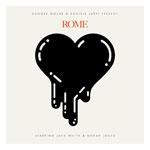Elvis Costello and the Attractions “Get Happy!!” Mobile Fidelity Sound Labs / Universal Music Special Markets
- Performance:

- Sound:

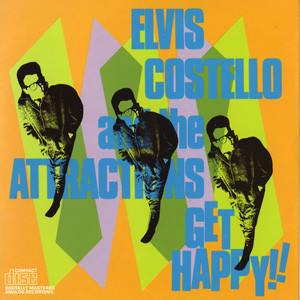
Becoming an Elvis Costello fan was one of the least likely events to have occurred in my life. Thanks to Mobile Fidelity, I now have approximately $150 worth of Costello goodness packaged in the form of four exemplary vinyl releases. I reported here on the first couple and left off the third for fear of redundancy. But MoFi’s newest Costello title, 1980’s “Get Happy!!,” puts a new spin on things. (Pun intended.) The original recording contained all twenty tracks on one platter whereas the MoFi version spreads them out over two 45rpm discs. I got happy on first listen, and will stay that way any time this record’s in rotation. The content is amongst my favorite of his first four long players. The quality of this specific release is off the charts. I’m to understand that some folks can get a little turned off by what MoFi does as they do have their own distinctive style which may not reflect the originals’ sound. But in Costello’s case, I think the change is more than acceptable and almost necessary. If good things come to those who wait, then thirty years ought to get the job done. I hope my copy holds up for at least thirty more. I’m almost fool enough to buy a backup and leave it in the attic. If I only had an attic.
As for the production: Nick Lowe twisted the knobs on the first few Costello releases reportedly amongst much drinking and merriment. Politely, Lowe is no George Martin. Frankly, the original records don’t sound that great. Clearly, we all have our individual tastes and expectations for what it means to make a great sounding rock and roll record. To me, Costello’s early work sounds like it was made in a carpeted room with the mood sucked out of it and buried under more carpet. No edge to them whatsoever. I’m a little nuts. I like gritty recordings that capture the mood of what’s happening more so than sonically “perfect” ones with 100 percent separation between instruments, voices, and other instruments and voices. To me, the point of making music is to collaborate, not to separate. I could go on and on, but the gist is that MoFi’s “Get Happy!!” has a little more life to it than even their first three Costello’s which I thought sounded great too. (Full disclosure: I only had one original to compare them to and that was Costello’s first which is a legendarily damp sounding disc. The original “Get Happy!!” might be even livelier than the newest, but I doubt it.) Beyond all that, there’s a somewhat interesting back story to “Get Happy!!” if you’re into that sort of thing, and it involves a drunken conversation that allegedly took place between Costello and his peers which resulted in the public revelation of a tasteless comment he made about James Brown and Ray Charles. If he said it, it’s a bad deal. Press conferences were held, apologies issued, explanations offered. Who knows if he said it or if it was conveyed accurately? Some have surmised that “Get Happy!!” was his attempt to atone for the debacle as it was his first release following the “incident,” and it has more of a rhythm and blues flavor than his first three. I’m not sure. First, the record is of the rock and roll variety. A prominent organ does not a soul record make. Not necessarily. Second, Costello was about four years into a decade’s long career, and we can now see, with the benefit of historical context, that he was going to explore every genre available to him anyway. Seems likely that he’d have crossed the Soul Bridge eventually, and he’s done so in much more obvious ways since 1980. I hear an artist on “Get Happy!!” that’s growing confidently in ever-expanding ways with a voice that is so full of character that it risks detracting attention from the fact that he’s technically gifted too. I mean, he hits his notes. Every time. Even when Lowe’s production makes him sound a little like he’s singing into a telephone (“Men Called Uncle”) or when that organ threatens to take over the game (“Black and White World”). I’ll take a quick second here to note that I had to research these titles because the track listing on the cover does not in any way match the actual song sequence. Funny guy, that Elvis. There’s also a disclaimer from Nick Lowe on the back cover meant to assure listeners that 1980-era technology was such that there was no sound degradation as a result of the “crammed grooves” on the original. I’m skeptical, at best, and relieved to not have to fret about it. I’ll take two new 45rpm MoFi discs over a pristine original “Get Happy!!” any day no matter what my purist friends think. My goal is not to have the oldest record, but the one that sounds best. I’d bet the farm that I’ve got it spinning on my record player right now.
And when it’s done spinning, I’ll flip it over and spin it again. It sounds insanely clear. I wish with all my heart that some of the more reputable vinyl purveyors would follow MoFi’s lead in at least a couple of ways. The most obvious would be to use the original masters. Duh. And to me it seems just as obvious that you would want to surround a record that you have lovingly resurrected with the finest housing available. Why bother investing the time and money in a high quality reissue, then denigrating the quality of that project by housing the disc in a sandy paper sleeve and flimsy outer cover? I’ve harped on it before, but a MoFi release brings the issue into sharp relief. I didn’t need to run the record through my cleaner or even to blow dust from the record before playing it. No kidding. If one company can do it, all companies could do it, but most companies don’t. That’s why I’m willing to pay the extra money, and that’s why my four MoFi Elvis Costello’s are amongst my most valued records. The guy’s still working and as prolific as ever. One day, I’ll explore his newer works, but that’ll have to wait until MoFi finishes their run. I don’t know that they’re planning on more Costello releases, but I’ll keep buying until they misfire. Or until they release one of Costello’s misfires. There has to be a couple in a catalog this vast. I can say with utmost confidence that his aim was true on the first four.
James McMurtry and the Heartless Bastards “Live In Aught Three” Lightning Rod
- Performance:

- Sound:


I was fortunate enough to have my choice of two far away jobs when I decided to leave Georgia in 2005. Those were different times, I guess. Asheville, North Carolina didn’t seem new enough so I went with San Francisco. Now, that’s a different vibe, but that’s not what we’re here to talk about. My buddy turned me on to James McMurtry when I went on my “recruiting” trip to Asheville, and I became quite familiar with the disc during the first few lonely months out West. The one he gave me was called “Live In Aught Three.” It was recorded with McMurtry’s backing band, The Heartless Bastards, and I probably haven’t gotten as much play from a digital source in years. It wasn’t by choice, and it chapped my ass for that to be my only option. It served its purpose by helping me to spread the word, and finally, in aught eleven, it’s been released in its proper format. The recording was almost certainly done digitally, but the vinyl takes the edge off considerably. More importantly, it put “Live” right back in my heavy rotation. And it sounds unbelievable. Let the healing begin.
The first thing I noticed on the first listen on the first song (“Saint Mary Of The Woods”) is that McMurtry has a truly original sound. I couldn’t believe I hadn’t found him sooner. His laconic vocal delivery and his guitar anti-hero styling’s blew me away right away the right way from the start. I went back later and sampled a couple of his studio albums. Save yourself some time and go straight for “Aught Three.” That’s where the action is. The man is slicker than owl dung with an electric six-string, I can assure you, and his earlier efforts were more in the singer-songwriter vein. There’s not much blood in that one. Somehow, he’s not too busy playing live, but he manages to fill in all the necessary spaces as his trio’s lone guitarist. Sometimes he supplements with another player for a few songs, but it seems like it’s just for kicks. It’s certainly not a decision born of necessity. After you take all that in, you can get down to the business of admiring what might actually be his defining talent which is his songwriting ability. Maybe he picked up some pointers from his famous author daddy, Larry (Lonesome Dove). If you want to get right to it, start your listen on side three which houses the epic “Choctaw Bingo.” It’s funnier than anything Weird Al ever concocted, and it’s the album’s centerpiece. All humor aside, it rocks like crazy and swings like mad. All nine minutes of it. Surely, he’s using the extra guitarist on the “Aught Three” version. If not, he’s Superman. Maybe Clark Kent got tired of flying around in tights and he took up guitar playing. That would be the only logical explanation. While “Choctaw” is a bit novel, the other stand-outs, which are almost all the others, are simply well written rockers. “Red Dress” and “Too Long In The Wasteland” add a bit of peril to the proceedings while “Levelland” conjures images of the Great Western Migration. It served me well in aught five, and still gives me shivers today. The man tours like a maniac and I can’t recommend his live shows enough. I’m surprised the hippies haven’t latched onto him yet. Maybe they never will and I won’t have to worry about leaving a gig smelling like patchouli. I’d wear it with pride if it came down to it though because I’ll catch every show I can from this point on. “Aught Three” closes with a cover of Townes’ “Rex’s Blues.” It’s the best version I’ve heard and I’ll stand on Steve Earle’s coffee table in my boots and tell him so.
Do yourself a favor and go get this album. Like, now. I’ve never played it for anyone that didn’t like it. I’ve picked my spots. I haven’t attempted to convert any teenagers or anything. There’s not enough pretense in this sound for folks that value today’s pop music. This is a band standing on stage playing instruments and singing songs. No auto-tuners or computerization. No overblown dramatic wailing or whining. Live rock and roll that actually includes the “roll” part. Damn, it’s a nice one to have in the collection. I can’t say enough about how excited I am to finally have it on two high quality heavy records with a big, glorious gatefold housing. It comes with a CD. Do whatever you want with that. Give it to someone that hasn’t converted yet. Once they hear “Choctaw Bingo,” they’ll never leave you alone about it. Folks pass that song around like a collection plate in a Baptist church. Do not play this song in a Baptist church. Play it everywhere else and play it loudly. That’s what I’m up to right… now.
Neil Young International Harvesters “A Treasure” WEA/Reprise
- Performance:

- Sound:

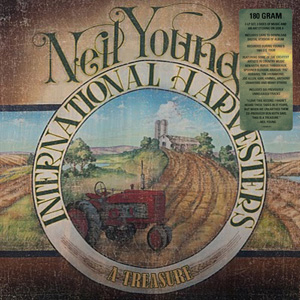
When I hear Neil Young sing “Are You Ready For The Country” I get visions of selling all worldly possessions, moving to the remotest of locales, and living off the grid and off the land. Until recently. Now, I think of his latest archival release called “A Treasure.” It’s a treasure. That’s why they called it that. And “they,” incidentally, are the Neil Young International Harvesters. I’m not sure why “harvest” crops up so much throughout Neil’s history, but I think this one’s the strongest “harvest” entry since “Harvest.” I guess what I’m saying is that I prefer it to the country-ish “Harvest Moon.” This one’s not country-ish. It’s straight country. Basically. There’s rarely anything absolute in the Neil Young canon. He has his slant, and that’s what keeps us dorks digging through and analyzing his catalog. And with the archival releases, we are guaranteed hours of distractions from our everyday lives, and plenty of digging time. His well springs eternal and all that dorky stuff…
“A Treasure” starts with a verbal intro: “Here’s Neil Young,” followed by polite applause sounding like I imagine a Branson, Missouri audience does before a Conway Twitty impersonator’s performance. Or something from a ’70’s variety show. But I adjusted quickly to the unpalatable image the way my nose adjusts to a bad smell. It vanishes until you step away and come back. I’ll be coming back to this one early and often, I can tell you that much right now. I prefer Crazy Horse Neil to any other Neil as a rule. It’s a challenge to listen to much else. “Treasure” makes it easy. The performances and recordings vary in mood and texture, but never in quality. Neil is engaged and engaging throughout. He has a reputation for curmudgeonly live rants (I was in an audience that raised his ire in Atlanta on the “Greendale” tour), but I can’t tell that he was anything but ecstatic during these mid-’80’s gigs. Mid ’80’s. Not exactly a banner era for honest music, but these recordings almost make those years bearable. He chopped down the cherry tree and told everyone about it. He always has. I’m not familiar with his “Old Ways” album from the same era, but I’m to understand that the material is similar. In fact, the two releases share just two titles which are “Bound For Glory,” and the aptly titled “Get Back To The Country,” which involves a Charlie Daniels styled fiddle workout. I’m also to understand that Neil went through a period of Willie Nelson idolatry around that time that even found him dressing the part. It’s not hard to imagine listening to “Bound For Glory” as parts of it sound like Neil covering “Good Hearted Woman” note for note. (Full disclosure: I haven’t heard “Good Hearted Woman” in eons. I’m basing this on a memory almost as old as me, and I’ll be 37 by the time anyone reads this. How did I get here?) The two records also share some personnel, most notably Spooner Oldham and Neil Young stalwart, Ben Keith. That would be worth the price of admission without Neil’s involvement. Half of the twelve treasures were unreleased until now which makes this archival release more archival than most. “Flying On The Ground” is quintessential Country Neil and a holdover from his Buffalo Springfield days. “Soul Of A Woman” is straight country blues, basically, which detracts somewhat from the straight country aesthetic of “A Treasure.” You can’t pin him down, folks. Don’t hurt yourselves trying. As soon as you do, he’ll hit you with “Trans,” and we probably don’t need to revisit that little slice of 1982, now do we?
“A Treasure” is similar to Neil’s other archival releases in some key ways. Mostly in that it is pricey from a monetary view and perfect from a vinyl perspective. I mean flawless. Deep blacks, unbelievable sonic clarity, and warmth unlike anything not on a reel to reel tape. Just don’t drop the needle on side four which has an etching of the cover art. That’s an amusing current trend, I guess. I suppose it helps keep the grooves from getting crammed even when there’s not enough material to fill four sides. I like it. I mean, I like the spacing. I can take or leave etchings. The artwork is pleasant, the gatefold sturdy. Speaking of: I sprung for the 180 gram version as opposed to the 140 gram one. And I mean “sprung.” My advice would be to not let the price scare you away. At some point, if you’re actually living a life, you’ll spend more money on dumber things. Hopefully, you’ll earn more, and you’ll never even miss your investment. That’s the principle I’m working under, anyway. Get this one before it’s gone or before you do anything else. It’s the most compelling Neil Young music I’d never heard. Thanks, Neil.
The Soledad Brothers “The Hardest Walk” Alive Records
- Performance:

- Sound:

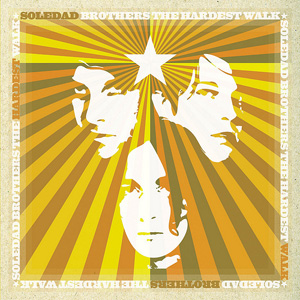
Last month we took a look at Brian Olive’s mind-blower of a new record called “Two Of Everything,” and learned while researching that release that he used to be a member of the often heard of but never explored Soledad Brothers. So, the logical thing to do for me was to start from the end of that band’s career to get an idea of where Olive was coming from leading up to what I consider a frontrunner for 2011 album of the year so far. Or at least a contestant. Anyway, the Soledad Brothers released “The Hardest Walk” in 2006 and promptly disbanded a couple of weeks later. That’s rock and roll, and rock and roll is the Soledad Brothers. Definitely. I can’t say that “The Hardest Walk” is having the impact that Olive’s more recent work did, but it’s a juicy nugget in a time of scarcity nonetheless. Parts of it work better than others, but that’s true of anything short of a masterpiece or an abject failure so I guess the Soledad’s are alright with me. Their guitarist taught Big Jack White how to play slide and played slide it himself on the White Stripes first long player too. So they had that working for them…
And that’s the first thing that jumps out at you. Guitars everywhere. There are no credits on the cover and no liner notes anywhere so trying to piece this band’s process together posthumously is that much more difficult, but Wikipedia has a small page on the outfit and no bassist is mentioned anywhere. Something about that Detroit boom in the early ’90’s must have made life rough on four-stringers. There must have been a bunch of them lying around with nothing to do except maybe learn to fix guitars. There is bass on the record. And drums. And horns amongst other things, but the guitar is the star. The vocals are almost an afterthought at least as far as the performance is concerned. They’re out front in the mix, but you could almost overlook them. Sometimes that works. “Sweet and Easy” sounds like a seductive T. Rex jam as a result of the vocal approach. “Crooked Crown” is basically a reworking of the blues standard “Rollin’ and Tumblin'” (or any of a million other names the song has worn over the years) with appropriately blazing guitar work, but it leaves you wishing for a more forceful vocal attack. At least it leaves me wanting more. It seems almost like the band made a conscious effort to split the two sides into separate sounds capes as side two veers a little further from the straight blues-based garage rock that is side one. “Let Me Down” is a cool droning meditation on I-don’t-know-what which segues nicely into “Mean Ol’ Toledo” which kinda continues the drone with what sounds like a banjo for emphasis. The vocals, again, are the least interesting aspect of the sound which might almost cause you to miss out on what are actually some pretty decent lyrics. I’d wager these guys were a little easier to get excited about in a live setting. Maybe they knew the end was near and wanted to save their energies for solo releases. It worked out for Brian Olive, I can tell you that. I don’t know anything about Johnny Walker or Benjamin Swank. (Olive went by “Henry Oliver” while with the Soledad Brothers. At least he did on “The Hardest Walk.”)
If you’re already a fan of modern garage rock, the Soledad Brothers may be right up your rock and roll alley. It’s not the most dangerous sound out there, but it’s not Anne Murray Christmas music either. There’s enough experimentation on “Walk” to pull a crowd beyond the purists too. To say the recording is “Lo-Fi” doesn’t quite get the message across. The record feels a little half-hearted to me, but that may be by design. I’d have been really stoked to catch a show, and I think I had a million opportunities, but ultimately I can see why Soledad’s Detroit contemporaries are still at it while the trio has moved on to other things. One of them, at least, is on to something big and is playing shows with people like Dr. John to prove it. If you’re into this kind of music, spring for the vinyl and order it from Bomp Records. They have some copies left and they’re pressed on purple vinyl. I saw some new copies on eBay too. If you’re just curious, I’d recommend fishing around on iTunes (gasp!) and picking your spots. I haven’t dug in, but I’d guess there’s something more inspiring in the band’s catalog than what can be found on “The Hardest Walk.” It’s not the hardest listen, but it lacks the creativity and inspiration of the record that steered me to it. Check out the Olive record first and branch out from there. That’s my advice. Do what thou wilt…
Levon Helm “Ramble At The Ryman” Vanguard Records
- Performance:

- Sound:

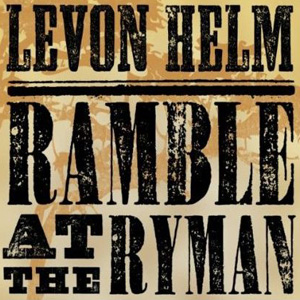
I only got a chance to see the Band play live once. It was in the early ’90’s and the music sounded good enough. It wasn’t a life changer, but it was my only chance to see Rick Danko perform and his vocals literally brought me to tears during “It Makes No Difference.” Mission accomplished as far as that goes. Garth Hudson was great too, of course. Robbie Robertson, obviously, was nowhere to be seen, and based on what I’m hearing out of him these days it’s a good thing. Levon Helm was the man I was there to see and I would have a chance to see him again a few years later fronting his own outfit. Fortunately, he was recovering from throat cancer at the time as opposed to succumbing to it. Unfortunately, it meant he couldn’t sing. But his daughter did, and she did it well. Flash forward to September 17, 2008: Levon and his daughter are rocking Nashville’s Ryman Auditorium as part of the touring version of his “Midnight Ramble” which usually takes place at his house in Woodstock. Yep. You can buy tickets to see shows at Levon’s house. A pilgrimage is in order, I do believe, but it will have to wait. And the recently released “Ramble At The Ryman,” taken from that same night a few years back, will fill in nicely until I find the time to go see it for real. For real.
If you’re anything like me, you wanna know straight away what Band songs made the cut on this album. These are them: “Evangeline,” “Ophelia,” “Rag Mama Rag,” “The Shape I’m In,” “Chest Fever,” and “The Weight.” The middle four are some of my favorite songs by any band, the last I’ve heard so many times that I no longer have any perspective on it, and the first one I think is pretty good. I thought Levon’s “Dirt Farmer” was great. Especially his version of “Tennessee Jed” which set me off on a Grateful Dead jag for a couple of weeks. No small accomplishment, that. That album is represented not at all on the Ryman album which seemed odd to me until I realized (just now) that it was released in 2009 which is after the Ryman date. So, he fills “Ryman” out with a bunch of old-timey hootenanny music which fits no one’s voice better than Levon Helm’s. And he comes by it honestly. This is no homage, this is what the man grew up on. It’s what he knows firsthand from attending the late night Rabbit’s Foot Minstrel Revues when things got bawdy and hot. Or whatever they were called. The Ryman record sounds a lot like what I imagine those shows did minus the strippers and comedians and magicians and contortionists. Check that: Levon can still contort his voice into some of the most beatific shapes that can be found. But I fear he can’t do it too much for too long as a result of that illness which I’m guessing is why he employs so many guest vocalists now. I’ve seen all the major players on “Ramble,” including Buddy Miller (who I saw with Robert Plant’s Band of Joy), Sam Bush, Sheryl Crow, and John Hiatt. None of them are fit to even carry Levon Helm’s drum sticks when it comes time to sing. And I don’t know what Billy Bob Thornton does on this one, but he’s credited as a vocalist. It all makes for a slight bit of unevenness, but it’s far from a bumpy ride. Larry Campbell is the band director, and there’s not a more road tested warrior out there. He was filling the same description in Dylan’s band when I caught him at Madison Square Garden in 2002. (They played “Brown Sugar.” How do you like that one?) Take it all around, and I believe that if I could choose to see Levon in any of the musical incarnations that I’ve mentioned so far, I’d choose one of these “Ramble” shows. Unless, of course we could get the original Band back together which would require Lazarus-like abilities, alchemy, and amnesia. I’m a little short on all but the amnesia at this point so “Ramble” it will be. The Band tunes are the highlights for me, but “A Train Robbery” smokes too as does Chuck Berry’s “Back To Memphis.” “Deep Elem Blues” is cool too, but not as cool as it would have been had Levon sung it. I don’t know who sang it on “Ryman” because…
…the liners don’t tell you. You only get a general listing of the performers and what instruments they were responsible for that night on the back cover of the gatefold. It being a gatefold, I’d have thought they’d have had plenty of room to get more detailed. Maybe that’s the allure of Levon’s Ramble. It’s a party so who cares who’s doing what as long as it swings, right? Alright. But I’d still like to know since we have this one for posterity. I’d be especially curious to know what Levon’s daughter, Amy, does on this one as she’s credited on vocals, drums, and mandolin. Exactly like her daddy. Beyond the sketchy documentation, the vinyl package is quite compelling. The two records are heavy and clean with very minimal surface noise. None worth mentioning, in fact. The quality of the recording is first rate with the audience’s reactions turned up in just the right places a la “Frampton Comes Alive” or any live document you care to name from the ’70’s. The horn section is a blast (pun intended) and all the instrumentation in general is clear as a cowbell. If you’re a fan of the Band, or Levon specifically, you want this record. He’s still carrying the torch while Robertson has abandoned you and isn’t coming back. So this is as close as you’ll get to the glory that was. And it’s as close as I’ll get to Woodstock until I get to Woodstock. Seems like there’s a song about that somewhere, but Levon didn’t sing it. I’d like it better if he did.


